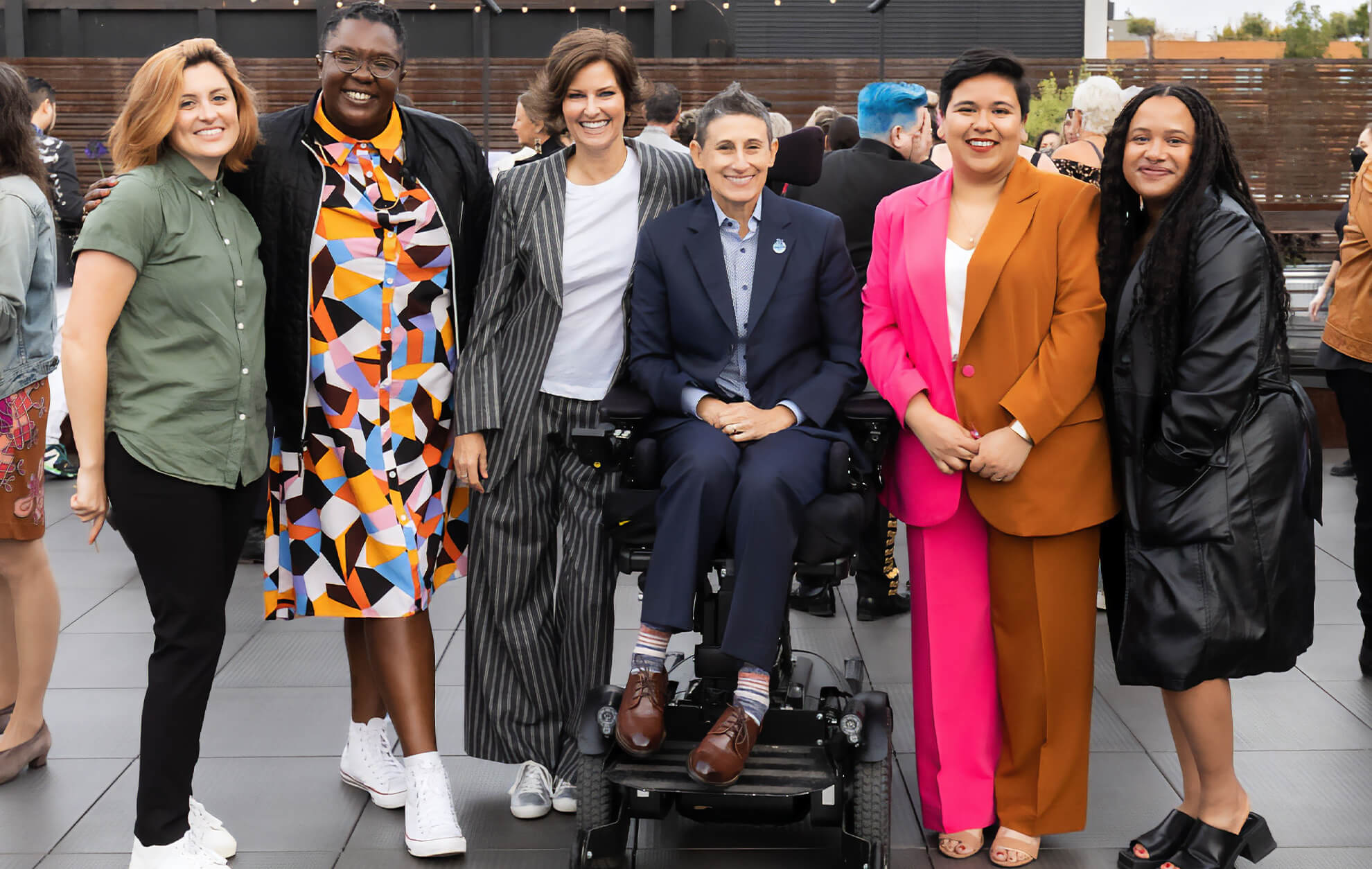Happy Holidays, Curve Community!
Thank you for everything you’ve done this year to build our community: from donations, to attending our First Anniversary celebration, to supporting our programming and journalists. We wouldn’t be here without you, and we are proud to share the work we’ve done to raise visibility, share culture and stories and connect with each other.
This year we’ve worked hard gathering journalists online and IRL: the Curve Award for Emerging Journalists is unique in that the award winners stay connected throughout the year. Alongside foundation staff, these journalists connect quarterly to work through goals and ensure accountability in a safe and inclusive space.
We’ve learned so much from these incredible storytellers, and it’s only fair that we share. Here are three truths we’ve learned from the Curve Award in 2022:
Connection is often all that’s needed to make systemic impact
We’ve learned from our work with the Curve Award that connection is often the spark that gets things moving. Convening journalists from all over the country to break bread and share stories is the most exciting aspect of our program because it demonstrates that connection can result in personal achievement and systemic impact.
Our favorite story to demonstrate this is Helen Santoro’s Aug ’22 piece in the New York Times, which she pitched and published after making a connection with fellow Curve Award winner Giulia Heyward. Beyond receiving her first NYT byline, Helen considers real change in the medical field through her first-person narrative:
…month after month, I surprised the experts, meeting all of the typical milestones of children my age. I enrolled in regular schools, excelled in sports and academics. The language skills the doctors were most worried about at my birth — speaking, reading and writing — turned out to be my professional passions.
For more than a century, the left hemisphere of the brain has been considered the center of language production and comprehension.” But some neuroscientists now think that language processing is not limited to specific brain regions.
In her vulnerability, Helen has used her narrative to create room for new alternatives – for folks like her, and for the field of neurology.
We’re often the first to a story about our community, and we stay with it until it hits the mainstream
Queer journalists often hold two identities: their own personhood, and that of an advocate. The advocacy is nuanced, as it rarely overcomes professional commitments to be unbiased, but it is present.
You can see it in the work of Imara Jones, who we were lucky enough to hear speak at this years’ National Association of LGBTQ+ Journalists’ conference. You can see it in the storytelling of Holly Regan, ’22 winner, who simultaneously grieves the loss of their local gayborhood and deftly tells of its political history in a March 2022 piece for Eater Seattle.
These storytellers do the work of informing while remaining authentic, holding truth alongside values and remembering that the ‘personal is political.’ In this duality, they are also often the first and last to authentic stories about our community: paying close attention to forgotten subjects, and understanding the systemic implications of our basic personhood (often because of others’ bias).
In this vein, this year, we celebrate Curve Magazine’s former political reporter, Victoria A Brownworth, for reporting weekly on Brittney Griner through her incarceration and release. We also cheer for ’21 winner Katie Barnes, who covered Lia Thomas for ESPN throughout the NCAA season and sat down with Lia for her first televised interview after her historic win.
Resourcing one journalist is resourcing a movement
In a 2022 op-ed, journalist Amanda Ripley shares a simple reason why 42% of Americans avoid the news: our journalism has lost its humanity. To reconnect our journalism with our humanity, she compels us to invest in “low-ego, high curiosity journalism” that fosters hope, agency, and dignity.
The journalists that we work with embody the hope, agency, and dignity needed to overcome our broken model for journalism. They consider queer joy and opportunities for advocacy in all that they do and show up, visibly and fearlessly, to every story that comes their way.
We see, firsthand, how resourcing a person and investing in their leadership can compel movement. Three Curve award winners led panels at this year’s national conference for queer journalists, sharing lessons learned and innovative strategies for the newsroom with folks twice their age. As individuals, these storytellers are the agents of change that compel and move us towards action.
I’d like to leave you with a vision of the news as it could be, as described by the 2021-22 Curve Award cohort. After a visioning session with Alicia Bell, of the Racial Equity in Journalism Fund and Media2070, the cohort was asked one question:
What could the media and journalism ecosystem look like in 2070? What is its relationship to individual journalists? What is its relationship to the communities it serves?
According to them,
The future of journalism is local, representative, redistributive, inclusive and will foster individual and communal agency followed by action.
These are the stories we have to look forward to, and the future looks bright. We’re thrilled to support them toward this vision, and we hope you will too.



